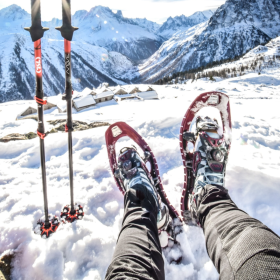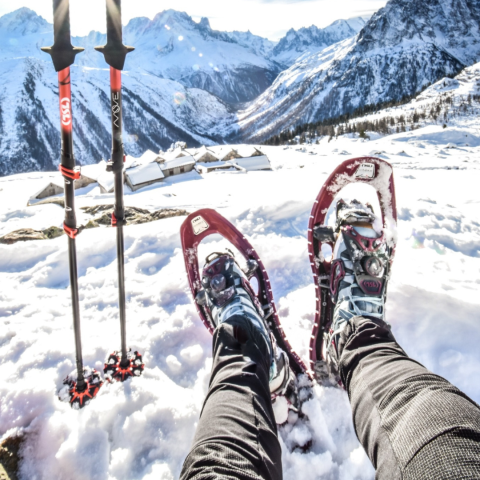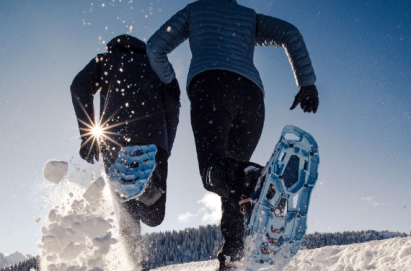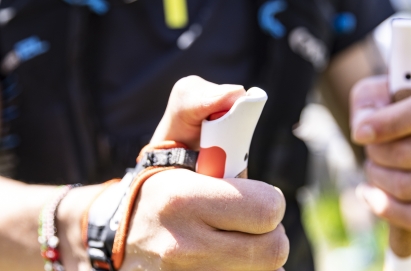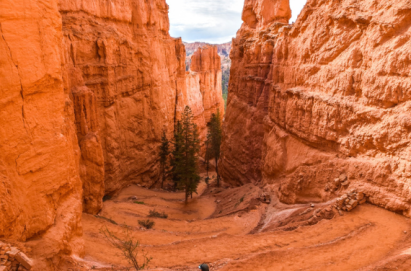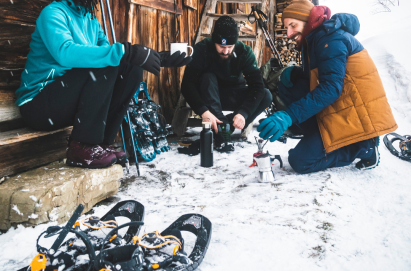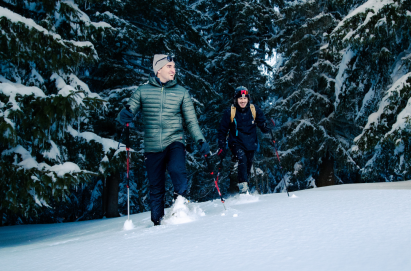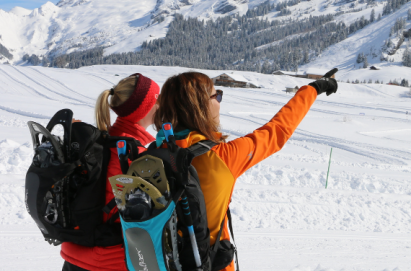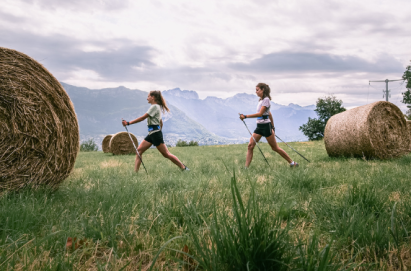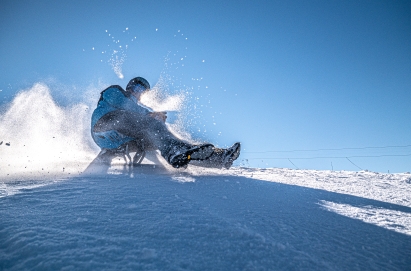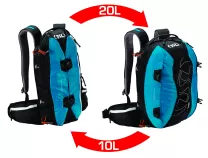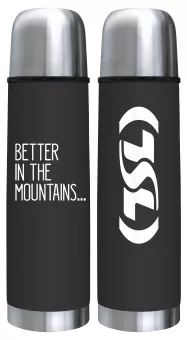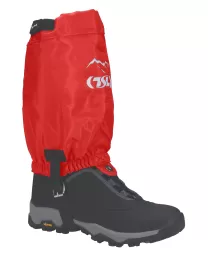
Is Snowshoeing Hard? A Comprehensive Guide
Welcome to the world of snowshoeing, an activity that opens up a winter wonderland of adventure and exploration. TSL Outdoor, a leading company in the realm of snowshoeing equipment and snowshoes, is here to guide you through the comprehensive world of snowshoeing. In this blog post, we'll address the question: Is snowshoeing hard? But we won't stop there; we'll also delve into the numerous benefits, equipment, techniques, and destinations to make your snowshoeing experience enjoyable and accessible.
Exploring the World of Snowshoeing
Snowshoeing is a versatile and inclusive winter activity that offers numerous physical and mental benefits. Whether you're a seasoned outdoor enthusiast or a beginner looking to embrace winter, snowshoeing is a fantastic choice. Our aim is to provide you with all the information you need to get started and enjoy the beauty of winter landscapes.
Discovering the Rewards of Snowshoeing
Snowshoeing offers a plethora of rewards that extend beyond the mere act of trudging through snow. As you embark on this winter adventure, you'll quickly discover the numerous benefits and advantages it brings to your physical and mental well-being.
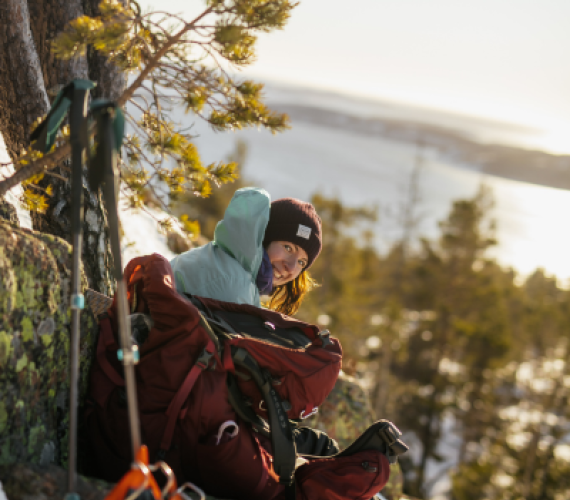
Physical Benefits
- Cardiovascular Exercise: Snowshoeing is an excellent cardiovascular workout. The act of walking through deep snow requires a substantial effort from your heart and lungs, helping to improve your overall cardiovascular health.
- Leg Strength: With each step, your leg muscles, including your quadriceps, hamstrings, and calves, are engaged. This constant work strengthens your lower body and can lead to enhanced muscle tone and endurance.
- Calorie Burning: The exertion required to move through snow burns a significant number of calories. In fact, you can burn as many as 400-1,000 calories per hour, depending on factors like your weight and the intensity of the activity.
- Low Impact: Unlike high-impact activities like running, snowshoeing is gentle on the joints. This makes it an excellent choice for individuals with joint problems or those looking for a low-impact exercise.
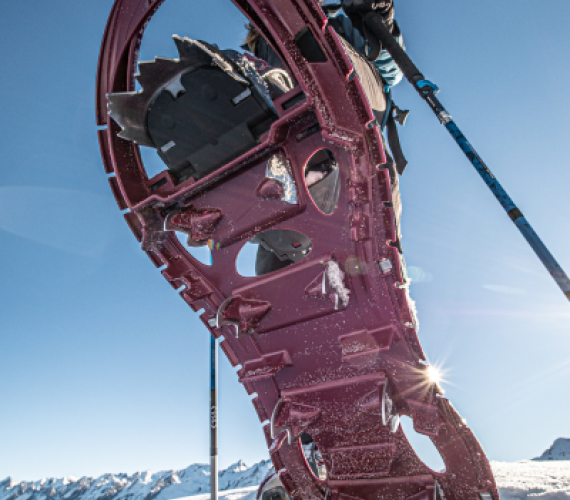
Mental Benefits
- Reduced Stress: Being out in nature, surrounded by the serene beauty of snow-covered landscapes, has a calming effect. Snowshoeing allows you to disconnect from the daily stresses of life and find peace in the stillness of the winter world.
- Mental Clarity: The solitude and quietude of snowshoeing provide an opportunity for mental clarity. It's a chance to clear your mind, reflect on life, and gain new perspectives.
- Deep Connection with Nature: Snowshoeing enables you to immerse yourself in the natural world. As you explore snow-covered forests, meadows, and mountains, you'll develop a deeper connection with the environment, fostering a sense of environmental stewardship.
- Enhanced Mood: Physical activity, particularly in the outdoors, triggers the release of endorphins, the body's natural mood lifters. Snowshoeing can boost your mood and leave you feeling invigorated.
Inclusivity
One of the remarkable aspects of snowshoeing is its inclusivity. It's an activity suitable for individuals of all ages and fitness levels. Whether you're a child just starting to explore the winter wonderland with snowshoes for kids or a senior seeking a gentle and enjoyable exercise, snowshoeing caters to a broad audience. Families can embark on snowshoeing adventures together, and friends can bond over the shared experience.
In conclusion, the rewards of snowshoeing are both physical and mental. It's a holistic activity that not only benefits your health but also offers the chance to escape into the beauty of winter. With the right gear and a willingness to explore, you can unlock a world of well-being and adventure through snowshoeing. So, gear up and start reaping the rewards of this incredible winter activity.
Addressing Concerns for Non-Skiers
One common misconception about snowshoeing is that it's reserved for those with prior skiing experience. We're here to clarify this notion and assure you that snowshoeing is an inclusive and accessible activity, regardless of your winter sports background.
Snowshoeing: No Prior Skiing Experience Required
Unlike skiing, snowshoeing doesn't demand specialized skills or prior experience on the slopes. In fact, one of the most appealing aspects of snowshoeing is its accessibility for people of all ages and fitness levels. It's a great choice for those who may not be comfortable with downhill skiing, want a more relaxed and tranquil experience, or simply want to explore winter landscapes at their own pace.
Anecdotes from Beginners
To put your concerns at ease, let's hear from individuals who were once beginners themselves but quickly fell in love with snowshoeing:
- Sarah, a first-time snowshoer, was initially worried about keeping her balance on her women snowshoes. However, she found that modern snowshoes are designed to provide stability and prevent sinking in the snow. She soon realized that snowshoeing was as easy as walking, even on flat terrain.
- James, who had never skied before, decided to try snowshoeing with snowshoes for men with his family. He was concerned about the technical aspects and the fear of taking a tumble. However, he was pleasantly surprised at how intuitive and safe it felt. He also noted that the learning curve was much gentler than he had expected.
Simple Walking on Flat Terrain
One of the best things about snowshoeing is its simplicity. To address concerns for non-skiers, it's important to emphasize that snowshoeing primarily involves walking on flat terrain covered with snow. The snowshoes distribute your weight, preventing you from sinking, and providing a stable platform. You'll find that the movement is natural and similar to walking in regular shoes.
Equipment
Hiking typically involves the use of sturdy hiking boots, suitable clothing, and trekking poles. In contrast, snowshoeing requires specialized pairs of snowshoes designed to keep you afloat on snow. You'll also need warm winter clothing to stay comfortable in cold conditions.
Terrain
Hiking trails are usually well-defined, marked, and often maintained year-round. Snowshoeing, on the other hand, opens up a world of winter wonderlands. You can explore snow-covered forests, pristine meadows, and alpine landscapes inaccessible to hikers during the snowy season.
Seasonal Availability
Hiking is a year-round activity, with trails accessible in all seasons. Snowshoeing, however, is a winter-specific activity that allows you to experience the magic of snow-covered landscapes. It's a fantastic way to embrace the beauty of winter and explore areas where hiking might not be feasible due to snow accumulation.
Solitude in Nature
One of the most appealing aspects of snowshoeing is the opportunity for solitude. Even on popular hiking trails, you're likely to find peace and tranquility as you venture into the snowy wilderness. Snowshoeing grants you access to untouched, serene landscapes where you can escape the crowds.
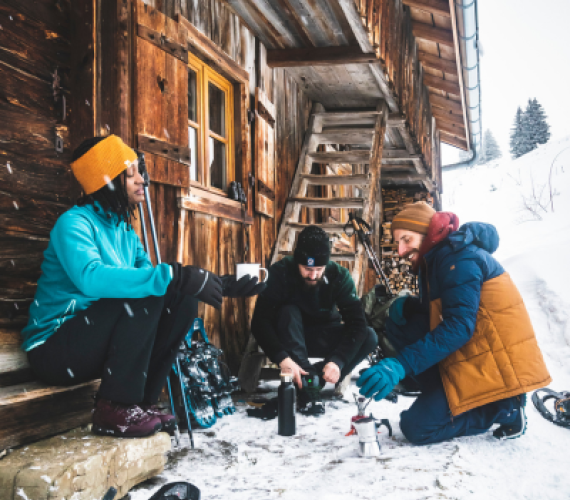
Snowshoeing vs. Skiing: Which is Right for You?
Another common winter dilemma is choosing between snowshoeing and skiing. Both activities have their merits, but there are distinct differences that can help you make the right choice for your winter adventures.
Accessibility and Affordability
Snowshoeing offers a distinct advantage when it comes to accessibility. It doesn't require specialized skills or extensive equipment. In contrast, skiing, whether alpine or cross-country, can have a steeper learning curve, with the need for lessons and additional gear such as skis, boots, and bindings. Snowshoeing is more affordable and inclusive, making it an attractive option for those new to winter sports.
Equipment and Skill Level
Snowshoeing equipment is relatively straightforward: snowshoes, poles, and warm clothing. There's no need for complex equipment adjustments, making it accessible to beginners. Skiing, on the other hand, involves specific techniques and skills that can take time to master.
Freedom to Explore
Snowshoes provide a unique freedom to explore various winter landscapes. You can venture into deep snow, trek through forests, and traverse rolling hills with ease. Snowshoes distribute your weight, preventing you from sinking into the snow. This versatility allows you to explore a wide variety of terrains that skiing may not accommodate.
The Basics of Snowshoeing Technique
Before you embark on your snowshoeing adventure, it's essential to master the basics of snowshoeing technique. Here's a step-by-step guide to ensure a safe and enjoyable experience:
- Put On Snowshoes: Secure your snowshoes by adjusting the bindings to fit snugly over your winter boots. Make sure they're secure but not too tight to allow natural movement.
- Choose the Right Size: Snowshoes come in various sizes to accommodate different weights and snow conditions. Ensure you select the appropriate size for your body weight and the type of terrain you'll encounter.
- Walking Technique: When walking in snowshoes, take wider steps than you would in regular shoes to avoid stepping on your own snowshoes. Lift your feet higher to prevent tripping on uneven terrain.
- Balance: Maintain balance by engaging your core muscles. Pay attention to your posture, and avoid leaning too far forward or backward.
- Uphills and Downhills: When ascending steep terrain, use the heel lift feature on your snowshoes. For descending, be cautious and take small, controlled steps.
By mastering these techniques, you'll enjoy a smooth and safe snowshoeing experience in a variety of winter landscapes.
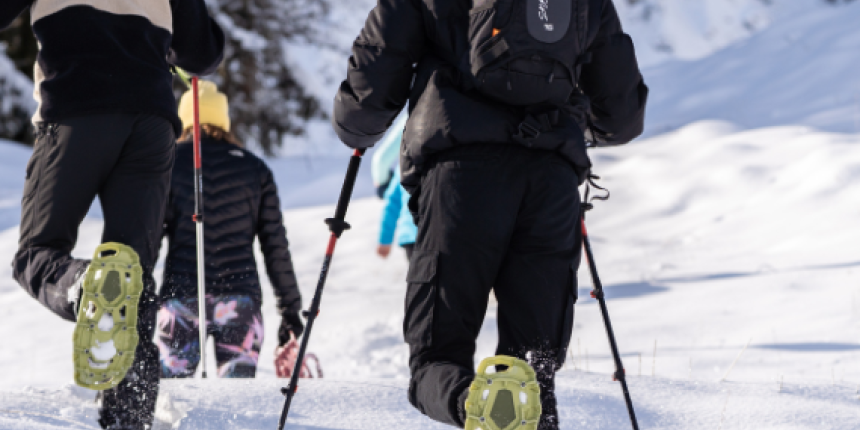
Finding the Perfect Snowshoeing Destination
Snowshoeing can be enjoyed in a multitude of locations, from local parks to national parks and remote wilderness areas. Here are some popular snowshoeing destinations and the types of terrains you can expect to encounter:
Local Trails
For beginners, local parks and nature reserves often provide groomed and well-marked snowshoeing trails. These trails are typically flat and easy to navigate, making them perfect for newcomers to the sport.
National Parks
National parks offer a wide range of snowshoeing opportunities. You can explore vast and pristine winter landscapes, from snow-covered forests to open meadows. Some parks even have designated snowshoeing trails, ensuring a safe and enjoyable experience.
Remote Wilderness Areas
If you're seeking a more adventurous experience, consider remote wilderness areas. Here, you can venture into untouched backcountry terrain. Keep in mind that these areas may require more advanced snowshoeing skills and additional safety precautions.
When selecting a destination, consider your experience level and the type of terrain you'd like to explore. Always check trail conditions and any regulations before heading out.
Planning Your Snowshoeing Adventure
The success of your snowshoeing adventure also depends on planning and preparation. Consider these aspects when planning your outing:
Trip Duration
Determine whether you're going for a day trip or a multi-day excursion. Your choice will impact the gear and clothing you need to bring.
Accommodation
If you're planning a multi-day adventure, research nearby lodging options. Choices may include lodges, cabins, and even winter camping facilities, depending on your preferences.
Guided Tours
Consider the advantages of guided snowshoeing tours. Guided tours provide expert guidance, safety, and the camaraderie of a group. They are an excellent option for beginners and those looking for a more structured experience.
Rental Equipment
If you're new to snowshoeing or visiting an area where you don't have access to your gear, inquire about rental equipment options. Many outdoor shops and adventure companies offer rental snowshoes and related gear.
Planning ahead ensures a smooth and enjoyable snowshoeing experience. Whether you choose a guided tour or prefer a self-guided adventure, your winter wonderland awaits.
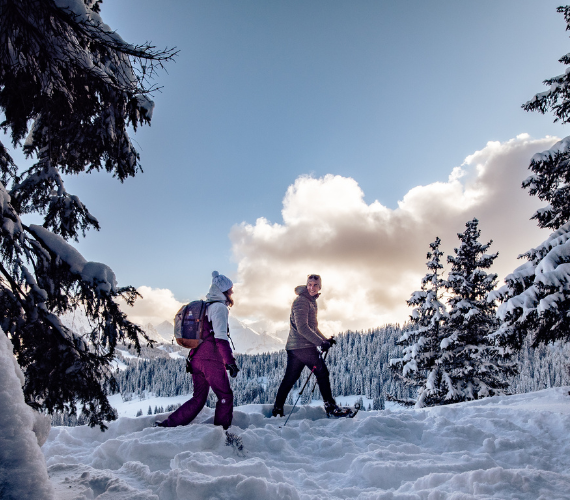
A Glimpse of Snowshoeing Terrain and Scenery
Snowshoeing opens the door to a wide range of terrains and breathtaking natural scenery. Here's a glimpse of the types of environments you may encounter while snowshoeing:
Serene Forests
Traversing through snow-covered forests is a magical experience. The quietness of the woods in winter, broken only by the occasional sound of snow falling from tree branches, creates a sense of peaceful solitude.
Picturesque Meadows
Open meadows blanketed in snow offer stunning vistas. The unspoiled white landscape contrasts with the clear blue sky, making for picture-perfect moments.
Challenging Alpine Settings
For the more adventurous snowshoer, alpine terrain provides a challenging and rewarding experience. Ascending to higher altitudes unveils breathtaking views, but it's essential to be well-prepared and have the necessary skills.
Different Trail Levels
Snowshoeing trails come in various levels of difficulty, similar to hiking trails. There are beginner-friendly trails that are relatively flat and easy to navigate. As you gain experience, you can explore intermediate and advanced trails that may involve steeper inclines and uneven terrain.
Trail conditions can change significantly with snowfall and weather. Fresh snow offers a pristine experience, but packed snow on well-trodden trails can be more accessible and easier to navigate.
Embracing the Snowshoeing Experience
Embracing snowshoeing means opening yourself up to a world of winter adventure. Here are some compelling reasons to try this activity:
Low-Impact Activity
Snowshoeing is gentle on the environment and your body. It leaves a minimal impact on the snow-covered landscapes, making it an eco-friendly choice. It's also low-impact on your joints, so it's suitable for people of various fitness levels.
Peaceful Solitude
One of the most rewarding aspects of snowshoeing is the peace and solitude it offers. It's a chance to disconnect from the hustle and bustle of daily life and find tranquility in the snow-covered wilderness.
Deep Connection with Nature
Snowshoeing immerses you in the natural world. As you explore snow-covered forests, meadows, and mountains, you'll develop a deeper connection with the environment. This connection can lead to a sense of environmental stewardship and a desire to protect these beautiful landscapes.
Adventure Awaits
Snowshoeing is an adventure in itself. It's an opportunity to explore uncharted territory, challenge yourself, and embrace the beauty of winter. From serene forests to challenging alpine settings, the options are endless.
Ready to Snowshoe?
As we conclude this comprehensive guide, we want to reiterate that snowshoeing is not hard; it's an accessible and enjoyable winter activity suitable for everyone. Whether you're looking for a peaceful solo adventure or a fun family outing, snowshoeing offers it all. We encourage you to try snowshoeing and explore the winter wonderland with the quality products and guidance from TSL Outdoor. So, gear up and get ready to embrace the magic of winter on snowshoes!
